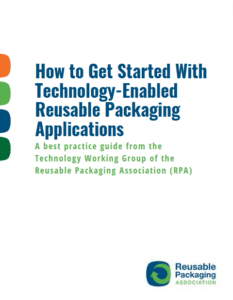As the widespread adoption and deployment of Reusable Transport Packaging (RTP) assets such as pallets, bins, and containers continue to expand, the industry ecosystem is increasingly applying technologies to enable visibility across the supply chain network of their goods.
After following the best practices from the “How to Get Started with Technolgy-enabled Reusable Packaging Applications,” a company or user should be able to ask/understand the right questions through the following key decision-making topics.
An excerpt of this guide is found below. The complete guide can be downloaded at the bottom of this page.
Business Problem to Solve
When starting any technology-enabled reusable project, the company’s leadership and project team must have a holistic understanding of what the project is trying to address. Defining the primary use case with internal and external customers and other strategic stakeholders across the supply chain system is a critical first step to any technology-enabled reusable project. Once the primary use case is defined, project teams should work with each stakeholder to identify additional secondary use cases as the project scope is finalized.
What primary use case needs to be solved, and how will a potential solution address the identified problem(s)?
Quantifying the problem and the expected magnitude of business impact is essential in implementing any technology-enabled solution. Understand why the company is interested in getting started and what issues impact the business and customers. Many examples of technologies successfully applied to reusable assets exist globally, where specifically targeted customer and industry use cases result in financial and operational benefits and quantifiable sustainability impact.
What are the expected benefits of the project? Has the problem or use case been quantified, and do the benefits include internal stakeholders and the broader external ecosystem partners?
Work closely with your business team, customers, and partners to identify and quantify improvement areas. This process defines the primary use case to focus on and other potential secondary use cases for any technology-enabled project. Based on TWG member experiences, a business or project team must define and carefully understand the primary use case before building a business case or selecting a specific technology-based solution.
Business Case / Strategy Development
Developing a strategy or business case for implementing any labeling, monitoring, tracking, or analytics technology project aims to determine the potential return on investment through cost reduction, process improvements, operational efficiency gains, and sustainability impacts.
Does your company have the expertise internally, or should you find external expertise to develop, build, and implement your strategy?
A company should consider several potential scope responsibility levels, from consulting to full-suite options.While working with a technology supplier/integrator may be an option, working with an external consultancy or technology-enabled data & insights management companies can be options to consider. RPA TWG member companies provide these levels of solutions for a company to get started.
Have both the CAPEX requirements and the ongoing OPEX operating costs been included in the business case?
When building your business case, it is essential to consider the CAPEX required for the technology solution and infrastructure investment and any ongoing OPEX expenses ranging from servicing or replacement of labels/tags to data transmission rates based on the technology applied and the storage and analytical computation costs associated to the gather operational data.
Technology Choices
A wide range of technologies is available to track, identify, monitor, or count goods or assets, as described in the white paper, A Smarter Technology-driven Supply Chain with Reusable Packaging Systems. Technology choices include Barcode, RFID, Cellular or LPWAN, Bluetooth Low-Energy (BLE) or Wi-Fi, and recently introduced technologies such as Self-Organizing Sensor Area Networks, Low Power Mesh, or Ultra-Wide Band (UWB) for RTLS (Real-Time Location System).
What device technology(s) should be evaluated to solve the problem, or should the primary use case be identified in the business case?
While there are many variables to consider, the most common include focusing on the value delivered as a function of the cost of the technology to ensure success. An in-depth table and discussion entitled “4.1 What Solutions Exist and Why You Would Use Them” in the TWG whitepaper referenced in this best practice guide is a good industry reference.
How will the chosen technology integrate with existing systems and processes within the company and its supply chain partners?
Consider any technology choice and how it will integrate into the business’s operational system and your supply chain partner systems. Important considerations include the management of the amount of data generated, integration into the operational systems for decision-making by stakeholders, data security, and others.
Based on the targeted use case, it is also essential to consider these variables:
Design & Assembly
Where should the ideal placement of a technology-based solution be applied to a reusable asset?
Evaluate where the tag or technology will be applied to the reusable asset. Device placement on reusable packaging must be planned so that it is not damaged or destroyed by forklifts, manufacturing, or cleaning processes. Ideally, the tag should be placed in a protected area of the asset that does not experience high levels of potential damage throughout its life. Additionally, consider if the tag/device is damaged and how it will be replaced, repaired, or synced with other devices on the reusable asset.
Material Choices
What type of material (plastic, wood, etc.) is the reusable asset made of?
When applying a technology such as a label or RFID tag, the most vital attribute, whether permanent or removable, is how it interacts with the substrate to which it is attached. The composition and surface energy of the substrate are just as vital as the label method and construction. When working with a label provider, validate the solution and the material/substrate used in the reusable asset.
What environmental conditions will the asset be exposed to during movements through the supply chain, including transportation and the environment?
What type of exposure will the reusable asset, including cleaning, serialization, or chemical-based processes, experience during its lifetime? Since a reusable asset can be in service for more than ten years, selecting a permanent label that can last the expected lifetime is critical. When planning any labeling of your reusable asset, it is essential to conduct testing that validates the labeling method selected to endure the real-world environment.
Serviceability
How will the technology sensor be serviced or replaced? How should the sensor itself or the battery power source be returned when using battery-powered sensors?
Evaluate the expected replacement frequency, as some examples require replacement multiple times a year based on the targeted use case. For example, if a sensing device needs a battery replacement after four trips based on the frequency of data gathered and transmitted, it may take more than 400 hours of operational impact to replace the batteries of 100,000 reusable assets.
Industry Requirements
What are the industry requirements of a sensing and monitoring technology device?
For example, using technology-enabled reusable assets in industrial automation vs. oil and gas or pharma industry may have requirements that differ significantly from environmental or regulatory requirements perspectives. Ensure any industry-specific unique regulatory requirements have been met.
Hardware / Software / Infrastructure Requirements
When building or implementing technology-enabled reusable assets in your business, it is essential to consider the infrastructure required to support your tech-enabled reusable assets and whether this exists in your business operations and your broader supply chain networks.
Does the infrastructure exist through your customer and the supply chain ecosystem? If not, how will that be addressed through device technology choices or ecosystem partnerships?
Work closely with your supply chain to determine the technology systems across your customers and partners. If your customer uses an RFID solution, and your logistic providers use GPS-based devices, understand each ecosystem partner’s role(s) and how a technology investment will work to achieve the expected benefits identified in the primary use case.
How does the frequency of reporting impact the technology choice?
Understanding the amount and frequency of reporting required to develop actionable insights across your business and broader supply chain ecosystem is very important. An increased reporting frequency can significantly reduce the battery life, requiring replacement or charging multiple times over the life of the reusable asset.
Data Collection and Management
When looking at potential data collection and management solutions for their technology-enabled reusable asset fleet, companies should consider the impact of types and amounts of data being gathered.Key decisions for a project team include the types of data gathered, whether event-based or time-based.
Have you considered how to manage the ‘volume’ of data in your business operating processes?
Define what an event is and when a connected, intelligent asset will trigger it. The project team must consider not flooding your business systems with much-unneeded data.
How will the volume and data security considerations be implemented?
When a company and its technology provider build an enabled system using numerous technology-enabled solutions, selecting IoT products and adjacent/connected products that provide the necessary security features is critical when operating as a total system.
Insights and Action
Companies face complex challenges across their supply chains and are saturated with a large amount of data from their operations. The focus on creating meaningful insights often needs to catch up to the investments and resources in functional teams gathering and managing large amounts of data.
How will actionable “insights” be generated so the business or customer (external or internal) can quantify the benefits, and how will they inform decision-making processes?
When looking into data analytics and insights-based learning models, a company or project team should understand and evaluate different models when acting on large amounts of data. The Sense-Infer-Act-Learn and the Observe-Orient-Decide-Act models are two primary models commonly used in AI/machine learning-based applications. Additional insights and learnings are included in the TWG whitepaper, “5. How to Use Data to Develop and Deliver Insights and Value.”
Who will be responsible for creating actionable insights? Do they have the right competencies and responsibilities in your business, partners, or supply chain?
When the primary use case is defined, it is also essential to determine the resources required for data management and the company’s functional areas to identify and act based on those insights.Often, these roles sit within the supply chain and logistics planning functions, and insights are used to create and modify supply chain strategies. When a project works across a broader ecosystem, it is essential to clearly understand the roles/responsibilities of each supply partner company.

